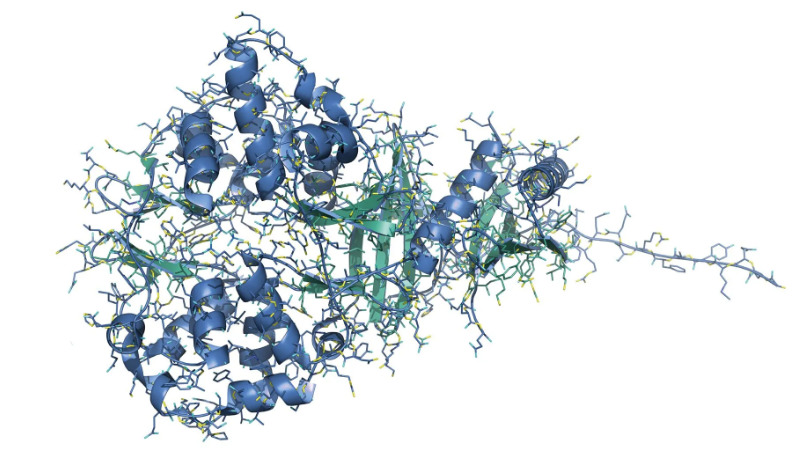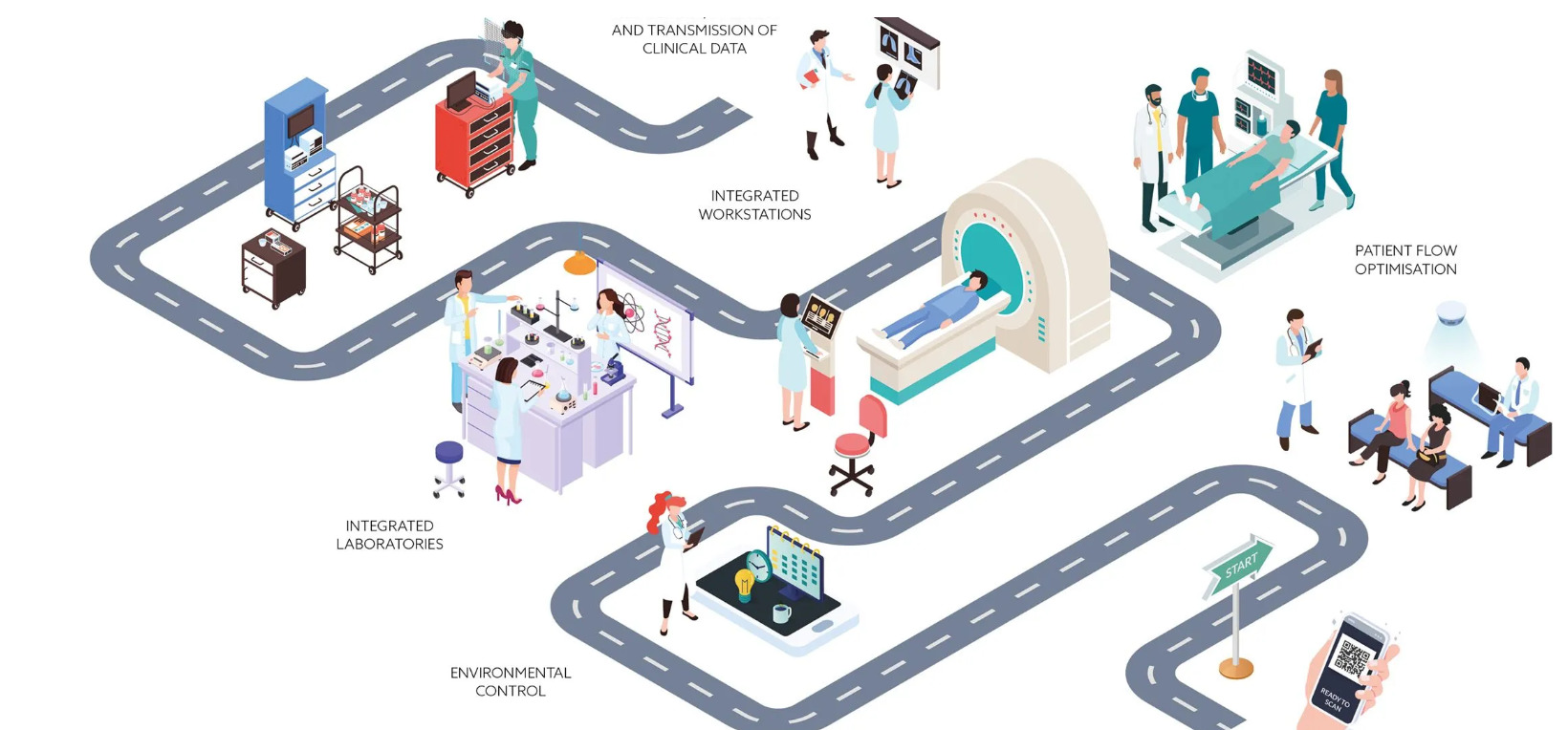Insights
More time to be human: AI in healthcare.
Part 1.
Could the rise of the machines help deliver on the people priority in healthcare design?
Lately, AI has been high on the healthcare news agenda. There are reports of AI-powered tools predicting survival rates and recurrence for lung disease and heart attack, potential liver cancer cures being developed in just 30 days. Biotech company Insilico and University of Toronto researchers used protein structure predictor AlphaFold and drug discovery engine Pharma.AI to identify a previously undiscovered pathway for treating the disease’s most common iteration, hepatocellular carcinoma, and while clinical testing is required before use within hospitals, it’s undeniably ground-breaking stuff.
The AI revolution could benefit the design of human-centric healthcare hubs that give us the power to facilitate more seamless, stress-free experiences.

AMP-activated protein kinase (AMPK) fragment: a typical structure that could be used by AI predictors
Image: ©Molekuul
There are hopes that AI will improve diagnostic processes, preventative measures and access to customised medicines and treatments – with cutting-edge technology helping to maximise efficient use of public funds.
What’s more, a new report from Europe’s largest sustainable venture capitalist investor, A/O PropTech, tells us that the rapid growth of startups harnessing AI for the built world has raised $12.3 billion in the last three years. We’re talking everything from computer vision and generative AI creating smart buildings and infrastructure, to construction robotics.
Indeed, early 2023 saw Dorset’s Royal Bournemouth Hospital – specialising in births, emergency and critical care, and child health – announced as the UK’s first NHS hospital to be built with AI technology, intended to provide the best value-for-money for taxpayers. It’s set to track healthcare standards, ensure design brief objectives are being met, improve efficiency and decrease costs by generating accurate, objective data and evidence-based real-time progress analysis via helmet-mounted 360-degree cameras on site.
Lessons around freeing up more time and funds to create spaces prioritising the human side of design can be taken into every sector. Yet healthcare is the area that could benefit most from the AI revolution, considering the potential impact of the chance to improve productivity, outcomes and satisfaction through design hubs that facilitate seamless, stress-free experiences.
Connected, intelligent hospitals could cut queues and whittle down waiting lists, bettering system efficiency – and that’s the tip of the iceberg. Technology holds huge promise in reducing the burden on healthcare professionals.
In our thought leadership piece, ‘Rehabilitating the Healthcare Machine’, we discuss the advantages of implementing patient monitoring and equipment tracking tech so that nurses spend less time hunting for what they need and more on patient contact. If tech can take care of the more mundane day-to-day essentials, such as ensuring fresh uniform is ready when staff arrive at work, they can get straight to clinical tasks and the all-important vocation of looking after people. This, in turn, could ease burnout and improve workforce retention, giving them more time to deliver the standards necessary and creating a ‘virtuous circle’ free of the moral injury that can occur when staff are physically unable to provide the level of care they’d like, due to strained systems. Optimising hospital performance frees up finances to invest in wellbeing, which leads to growth in satisfaction and staff retention, improved care and outcomes that feed back into optimised performance again.

Look out for part 2 coming soon, where we discuss how AI design and assistance enhance rather than diminish human-centric healthcare.